
The Whitney Museum of American Art, known informally as "The Whitney", is an art museum located in the Meatpacking District and West Village neighborhoods of Manhattan in New York City. The institution was originally founded in 1930 by Gertrude Vanderbilt Whitney (1875–1942), a prominent American socialite, sculptor, and art patron after whom it is named.

Grant DeVolson Wood was an American painter and representative of Regionalism, best known for his paintings depicting the rural American Midwest. He is particularly well known for American Gothic (1930), which has become an iconic example of early 20th-century American art.
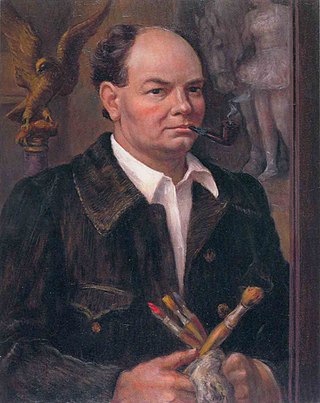
John Steuart Curry was an American painter whose career spanned the years from 1924 until his death. He was noted for his paintings depicting rural life in his home state, Kansas. Along with Thomas Hart Benton and Grant Wood, he was hailed as one of the three great painters of American Regionalism of the first half of the twentieth century. Curry's artistic production was varied, including paintings, book illustrations, prints, and posters.

Color field painting is a style of abstract painting that emerged in New York City during the 1940s and 1950s. It was inspired by European modernism and closely related to abstract expressionism, while many of its notable early proponents were among the pioneering abstract expressionists. Color field is characterized primarily by large fields of flat, solid color spread across or stained into the canvas creating areas of unbroken surface and a flat picture plane. The movement places less emphasis on gesture, brushstrokes and action in favor of an overall consistency of form and process. In color field painting "color is freed from objective context and becomes the subject in itself."
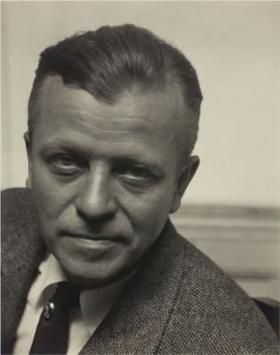
Arthur Garfield Dove was an American artist. An early American modernist, he is often considered the first American abstract painter. Dove used a wide range of media, sometimes in unconventional combinations, to produce his abstractions and his abstract landscapes. Me and the Moon from 1937 is a good example of an Arthur Dove abstract landscape and has been referred to as one of the culminating works of his career. Dove made a series of experimental collages in the 1920s. He also experimented with techniques, combining paints like hand mixed oil or tempera over a wax emulsion as exemplified in Dove's 1938 painting Tanks, in the collection of the Boston Museum of Fine Arts.
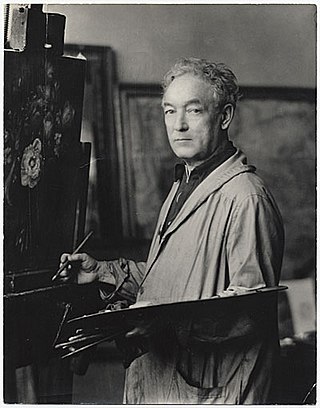
William James Glackens was an American realist painter and one of the founders of the Ashcan School, which rejected the formal boundaries of artistic beauty laid-down by the conservative National Academy of Design. He is also known for his work in helping Albert C. Barnes to acquire the European paintings that form the nucleus of the famed Barnes Foundation in Philadelphia. His dark-hued, vibrantly painted street scenes and depictions of daily life in pre-WW I New York and Paris first established his reputation as a major artist. His later work was brighter in tone and showed the strong influence of Renoir. During much of his career as a painter, Glackens also worked as an illustrator for newspapers and magazines in Philadelphia and New York City.
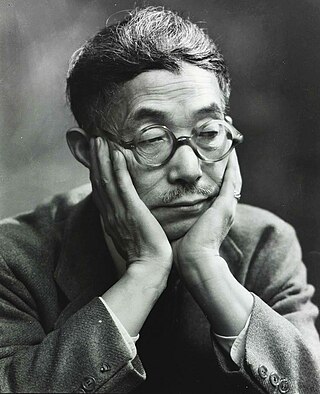
Yasuo Kuniyoshi was an eminent Japanese-American painter, photographer and printmaker in the 20th century.

John Marin was an early American modernist artist. He is known for his abstract landscapes and watercolors.

Charles Ephraim Burchfield was an American painter and visionary artist, known for his passionate watercolors of nature scenes and townscapes. The largest collection of Burchfield's paintings, archives and journals are in the collection of the Burchfield Penney Art Center in Buffalo. His paintings are in the collections of more than 109 museums in the USA and have been the subject of exhibitions at the Metropolitan Museum of Art, the Whitney Museum of American Art, the Hammer Museum, and the Museum of Modern Art, as well as other prominent institutions.

American Regionalism is an American realist modern art movement that included paintings, murals, lithographs, and illustrations depicting realistic scenes of rural and small-town America primarily in the Midwest. It arose in the 1930s as a response to the Great Depression, and ended in the 1940s due to the end of World War II and a lack of development within the movement. It reached its height of popularity from 1930 to 1935, as it was widely appreciated for its reassuring images of the American heartland during the Great Depression. Despite major stylistic differences between specific artists, Regionalist art in general was in a relatively conservative and traditionalist style that appealed to popular American sensibilities, while strictly opposing the perceived domination of French art.

Andrée Ruellan was an American artist whose realist work has modernist overtones and commonly depicts everyday scenes in American South and New York City. Born in Manhattan of French descent, she spent her youth there and in Paris and eventually made her home near the artist colony in Woodstock, New York. Her paintings, prints, watercolors, and drawings are known for their depiction ordinary people at work and play. They are held by many American museums and private collectors.
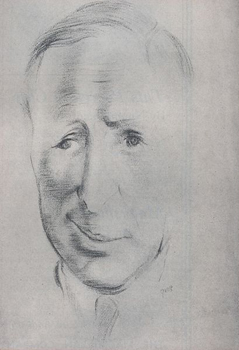
Thomas Craven was an American author, critic and lecturer, who promoted the work of American Regionalist painters, Thomas Hart Benton, John Steuart Curry and Grant Wood, among others. He was known for his caustic comments and being the "leading decrier of the School of Paris."
Achelous and Hercules is a 1947 mural painting by Thomas Hart Benton. It depicts a bluejeans-wearing Hercules wrestling with the horns of a bull, a shape the protean river god Achelous was able to assume. The myth was one of the explanations offered by Greco-Roman mythology for the origin of the cornucopia, a symbol of agricultural abundance. Benton sets the scene during harvest time in the U.S. Midwest.

Rosalind Bengelsdorf was an American painter, art critic and educator. She is also known as Rosalind Bengelsdorf Browne and as Rosalind Browne.

Daniel Celentano (1902–1980) was an American Scene artist who made realistic paintings of everyday life in New York, particularly within the Italian neighborhood of East Harlem where he lived. During the Great Depression he painted murals in the same style for the Section of Painting and Sculpture and the Federal Art Project.

Ajax is an oil-on-canvas painting by the American artist John Steuart Curry, created in 1936–1937. It depicts a well-fed Hereford bull with two cowbirds on his back. The painting is on view at the Smithsonian American Art Museum, in Washington, D.C..
Sidney Goodman was an American figurative painter and draftsman from Philadelphia, PA who explored the human form. Goodman received public notice in the early 1960s for his oil paintings, leading to his inclusion in the 1973 Whitney Biennial. In 1996, the Philadelphia Museum of Art presented a retrospective show of Goodman's paintings and drawings.

Tornado over Kansas, or simply The Tornado, is a 1929 oil-on-canvas painting by the American Regionalist painter John Steuart Curry. It depicts a dramatic scene in which a family races for shelter as a tornado approaches their farm, and has compositional connections to Curry's earlier 1928 painting Baptism in Kansas. The artist is believed to have been influenced by Baroque art and photographs of tornadoes. He developed a fear of natural disasters and a reverence towards God during his childhood, both of which are apparent in the painting.
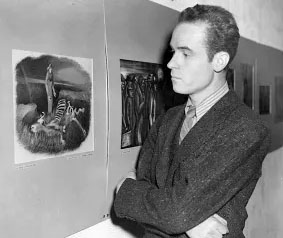
Bernard Joseph Steffen was an American artist known for his lithographs. He was part of the American Scene and worked at the Federal Art Project of the Works Progress Administration.

















